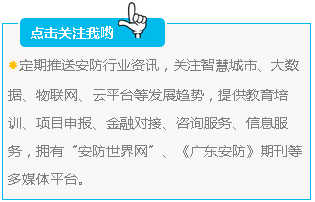

[Abstract] The 485 bus is often used in the wiring of common access control systems, but most people do not understand it. Below, the editor will discuss the 485 bus protocol and the related knowledge of the 485 bus transmission distance. 485 Bus Protocol 485 Bus Protocol When the communication distance is required to be…


When the communication distance is required to be from tens of meters to thousands of meters, the RS-485 serial bus standard is widely used. RS-485 uses balanced transmission and differential reception, thus having the ability to suppress common-mode interference. Additionally, the bus transceiver has high sensitivity, capable of detecting voltages as low as 200mV, allowing the transmission signal to be recovered over kilometers. RS-485 operates in half-duplex mode, meaning that only one point can be in the sending state at any time; therefore, the sending circuit must be controlled by an enable signal. RS-485 is very convenient for multipoint interconnection, as it can save many signal lines. Using RS-485 allows for networking to form distributed systems, allowing for a maximum of 32 drivers and 32 receivers to be connected in parallel.
485 Bus Protocol also has the following features:
1. The electrical characteristics of RS-485: Logic “1” is represented by a voltage difference of + (2—6)V between the two wires; Logic “0” is represented by a voltage difference of – (2—6)V between the two wires. The interface signal levels are lower than those of RS-232-C, making it less likely to damage the interface circuit chips, and this level is compatible with TTL levels, facilitating connection with TTL circuits.
2. The maximum data transmission rate of RS-485 is 10Mbps.
3. The RS-485 interface uses a combination of balanced drivers and differential receivers, enhancing its ability to resist common-mode interference, meaning it has good noise immunity.
Due to the excellent noise immunity, long transmission distance, and multipoint capability of the RS-485 interface, it has become the preferred serial interface. Because the half-duplex network formed by the RS-485 interface generally only requires two wires, shielded twisted pairs are used for transmission. The RS-485 interface connector uses a DB-9 9-pin plug and socket, connecting to the intelligent terminal’s RS-485 interface using a DB-9 (socket), while the keyboard interface connecting to the keyboard uses a DB-9 (pin).
The maximum communication distance of RS-485 is approximately 1219m, with a maximum transmission rate of 10Mb/S. The transmission rate is inversely proportional to the transmission distance; at a transmission rate of 100Kb/S, the maximum communication distance can be achieved. Theoretically, when the communication rate is at 100Kpbs or below, the maximum transmission distance of RS-485 can reach 1200 meters, but in practical applications, the transmission distance also varies due to the transmission characteristics of the chips and cables. During transmission, signal amplification can be achieved by adding repeaters, with a maximum of eight repeaters allowed, meaning that theoretically, the maximum transmission distance of RS-485 can reach 9.6 kilometers. If long-distance transmission is truly needed, fiber optics can be used as the transmission medium, with a photoelectric converter added at both ends. The transmission distance of multimode fiber is 5~10 kilometers, while single-mode fiber can reach a transmission distance of 50 kilometers.
Source: Huaqiang Security Network
Press and hold the image “Scan the QR code in the image” to follow or click on the top “Guangdong Security Association” to follow.

↓↓↓